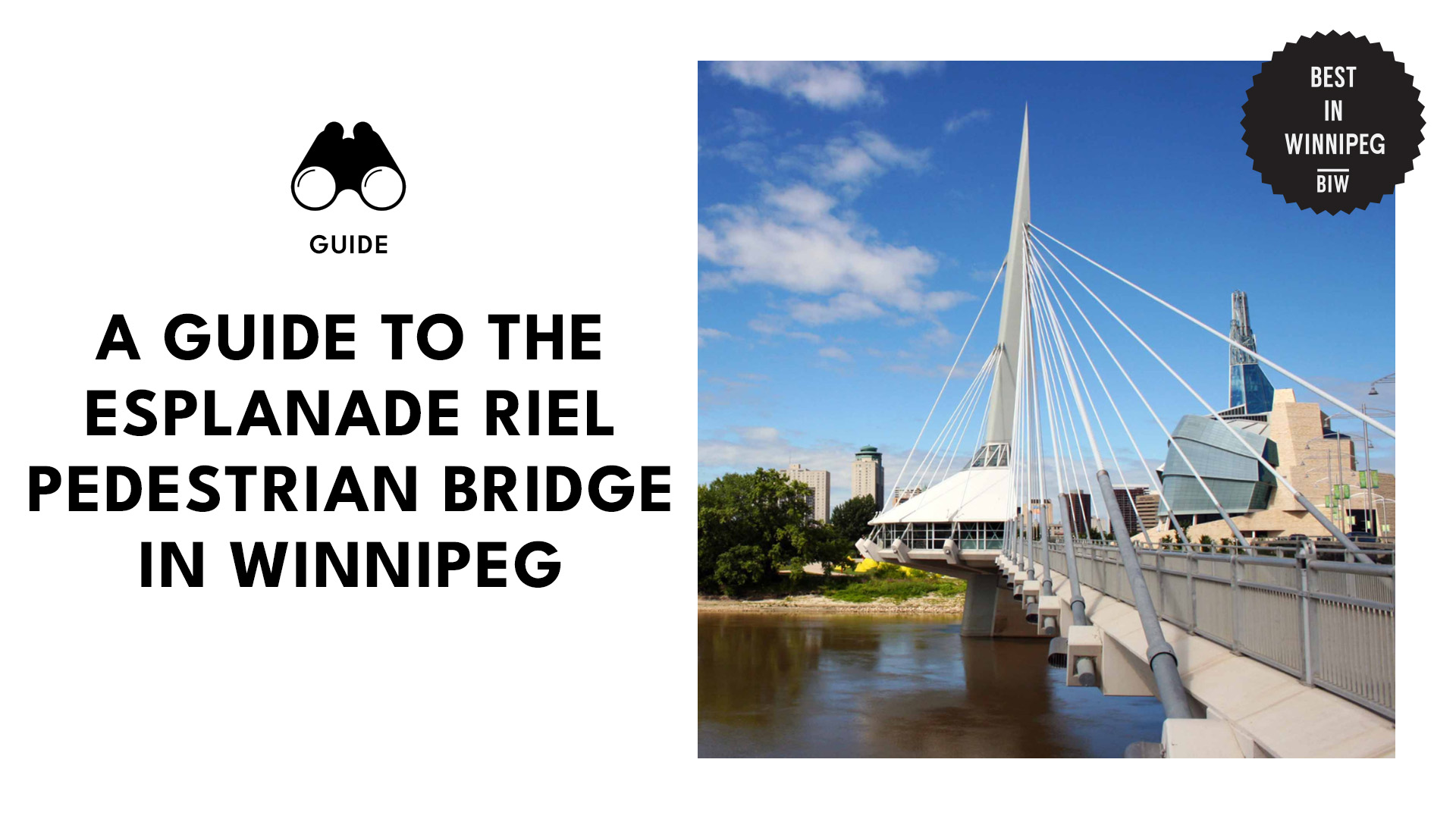Esplanade Riel Pedestrian Bridge in Winnipeg: All You Need To Know
Imagine a warm summer evening, the sun setting over the Red River, and the gentle breeze carrying the laughter of families and friends.
Personally, I can attest that the Esplanade Riel Pedestrian Bridge is more than just a structure of steel and concrete — it’s a living testament to our city’s spirit, resilience, and commitment to fostering a sense of community.
In this guide, we’ll dive into the fascinating history behind the bridge, exploring its architectural marvels and uncovering the stories that make it a symbol of Winnipeg’s progressive urban landscape.
About Esplanade Riel Pedestrian Bridge

The Esplanade Riel, a pedestrian bridge, stands as a tribute to Louis Riel. Spanning the Red River, this side-spar cable-stayed bridge serves as a vital link between downtown Winnipeg and St. Boniface, complemented by its counterpart, the Provencher Bridge.
A defining feature of the Esplanade Riel is its architectural composite tower, prestressed and adorned with a cantilevered, semi-circular plaza at its base.
Beyond structural elegance, the plaza offers a multifunctional space, accommodating both commercial activities and a unique restaurant, making the Esplanade Riel the sole North American bridge with such a feature.
In 2003, the bridge welcomed foot traffic, marking a significant milestone that culminated in a grand opening during the summer of 2004.
The collaborative design effort behind this architectural marvel came from the minds of Guy Préfontaine and Étienne Gaboury, architects at Gaboury Préfontaine Perry Architects, Inc.
The Esplanade Riel emerged as a key component of the Provencher Twin Bridges project, a comprehensive $72 million initiative that not only introduced the pedestrian bridge but also included a new four-lane vehicular bridge.
This larger project encompassed the development of new roadways and sidewalks, seamlessly connecting the bridges to downtown Winnipeg and Waterfront Drive.
Sights to See at Esplanade Riel Pedestrian Bridge
The Esplanade Riel Pedestrian Bridge is a modern marvel that not only connects two vibrant neighborhoods but also offers a journey filled with breathtaking sights.
As you traverse this architectural gem, be prepared to immerse yourself in a visual feast that unfolds along the bridge’s span. Let’s go on a tour of the remarkable sights awaiting you on this iconic bridge.
Panoramic View
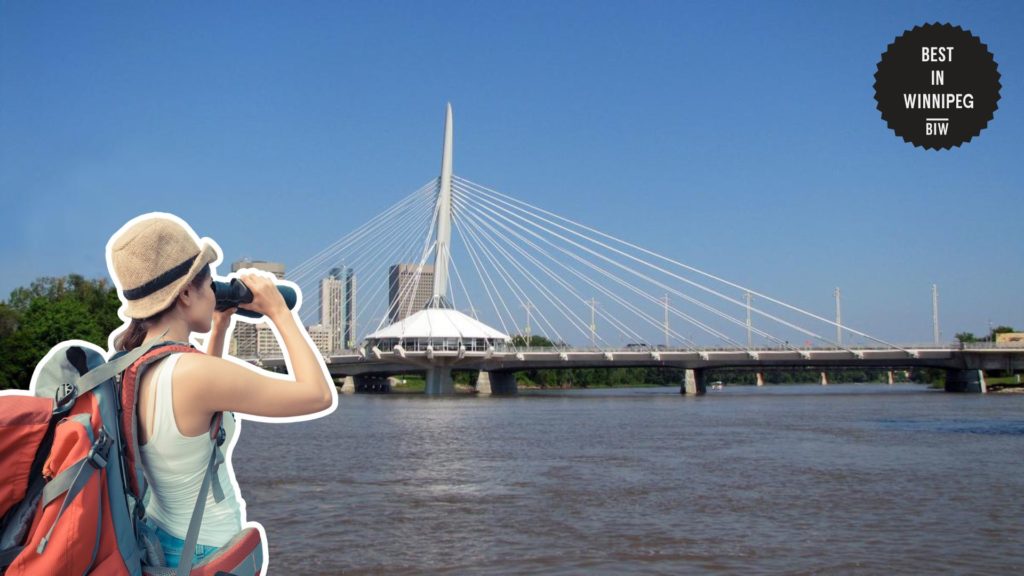
The Esplanade Riel Pedestrian Bridge is located north of the junction of the historic Red and Assiniboine Rivers.
From this vantage point, you can enjoy a panoramic view of Winnipeg’s cityscape, including the flowing Red River and the Canadian Museum for Human Rights.
The bridge’s height and location provide a unique perspective of the city. The Red River, one of North America’s most significant rivers, adds a natural element to the urban view.
The Canadian Museum for Human Rights, with its distinctive architecture, stands out as a symbol of the city’s commitment to social justice.
This panoramic view is not just visually stunning, but it also encapsulates the city’s blend of natural beauty, urban design, and cultural heritage. It’s a sight that both locals and tourists appreciate.
Historical Diorama
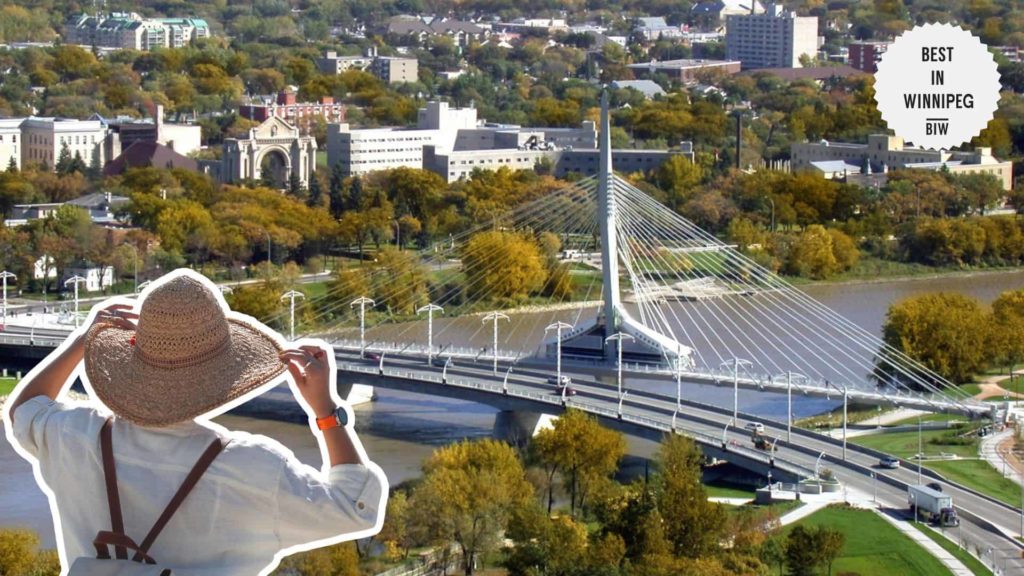
A diorama, a term originating in 1823 as a picture-viewing device, is a three-dimensional representation, either life-sized or scaled-down, portraying natural scenes or historical events.
The essence of the word itself, “diorama,” combines the Greek roots di- meaning “through” and orama meaning “that which is seen,” conveying the idea of seeing through to a visually engaging sight.
Unlike traditional dioramas confined within museum walls, this particular display is ingeniously set up to be viewed from the Esplanade Riel Pedestrian Bridge.
The bridge serves as a deliberate vantage point, strategically positioned to provide viewers with an immersive and comprehensive perspective of the historical scene.
This carefully crafted tableau employs a combination of painted backdrops and realistic foreground elements, creating a trompe l’oeil effect — an artful illusion that brings the depicted scene to life.
These historical dioramas, some of the most impressive examples of this artistic craft, transcend the confines of museums and find a unique home on the bridge.
The intention is to not merely educate but also entertain, allowing onlookers to visualize and understand historical events more tangibly and engagingly.
Architectural Marvel
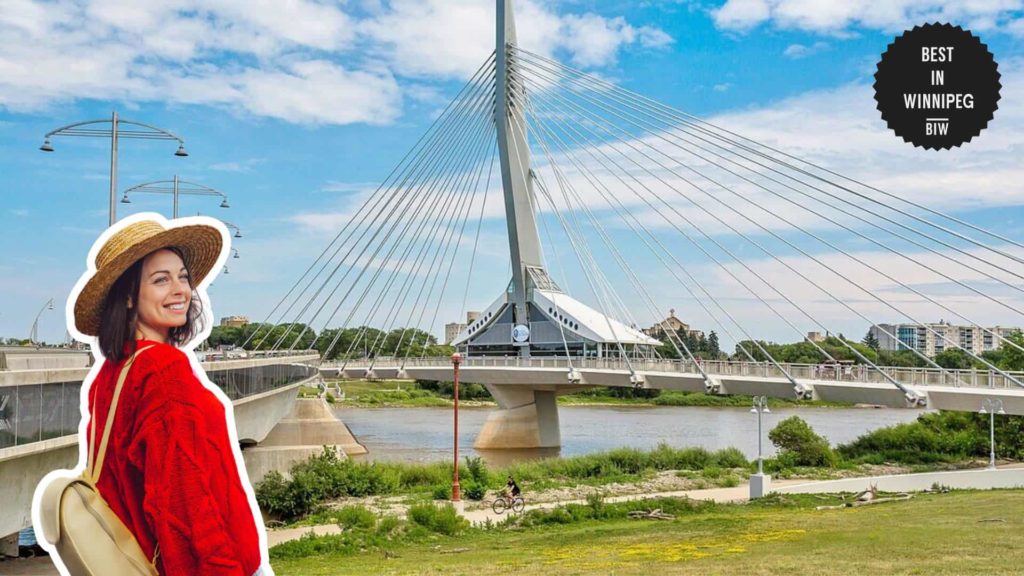
The Esplanade Riel Pedestrian Bridge is indeed an architectural marvel, bewitching visitors with its unique side-spar cable-stayed design.
Unlike traditional cable-stayed bridges, it boasts cables attached to only one side of its towering support structure, creating a visually stunning and asymmetrical aesthetic.
Rising majestically 57 meters above the Red River, the bridge’s single, transversely inclined pylon serves as the central support, lending an elegant and distinctive appearance to the entire structure.
This innovative design not only showcases the bridge’s engineering prowess but also reflects its intended purpose of accommodating pedestrian traffic, allowing for a more lightweight and aesthetically pleasing form.
One of the most striking features of the bridge is its architectural composite tower, which is prestressed and complemented by a cantilevered and stayed semi-circular plaza at its base.
This thoughtfully designed plaza not only enhances the bridge’s overall aesthetics but also serves a dual purpose.
It provides a versatile space for various commercial activities while also hosting a unique restaurant — an uncommon feature for bridges in North America.
Cultural Connection
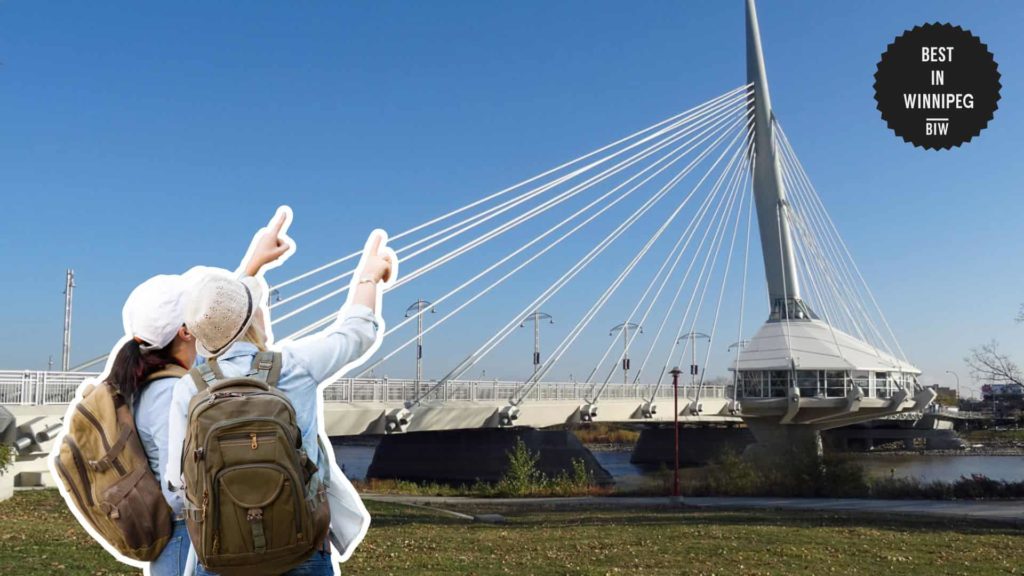
The Esplanade Riel Pedestrian Bridge serves as a powerful symbol of cultural connection, weaving together the city’s rich Franco-Canadian heritage and the diverse tapestry of downtown Winnipeg.
Saint-Boniface, often referred to as the French Quarter, proudly carries its history, and the bridge gracefully extends this cultural thread, bridging the gap to the bustling urban center across the river.
Here, a myriad of cultures converge, reflecting the true essence of Winnipeg’s multicultural identity.
Beyond its architectural significance, the Esplanade Riel Pedestrian Bridge plays a pivotal role in uniting the city’s Francophone and Anglophone communities. It stands as a testament to the spirit of unity and cultural exchange that defines Winnipeg.
The bridge’s journey doesn’t end at Saint-Boniface or downtown; it leads to The Forks, a historic site located at the convergence of the Red and Assiniboine rivers.
This vibrant area, with its markets, restaurants, and scenic river views, is a hub where people from all walks of life come together, adding yet another layer of cultural significance to the bridge.
The bridge itself is a canvas of diversity, adorned with patterns that mirror the cultural origins of Winnipeg — Indigenous, French, British, and Métis.
These intricate designs, reminiscent of the threads in a traditional ceinture fléchée (sash), accentuate the bridge’s role as a symbol of cultural connection.
Provencher Boulevard and Taché
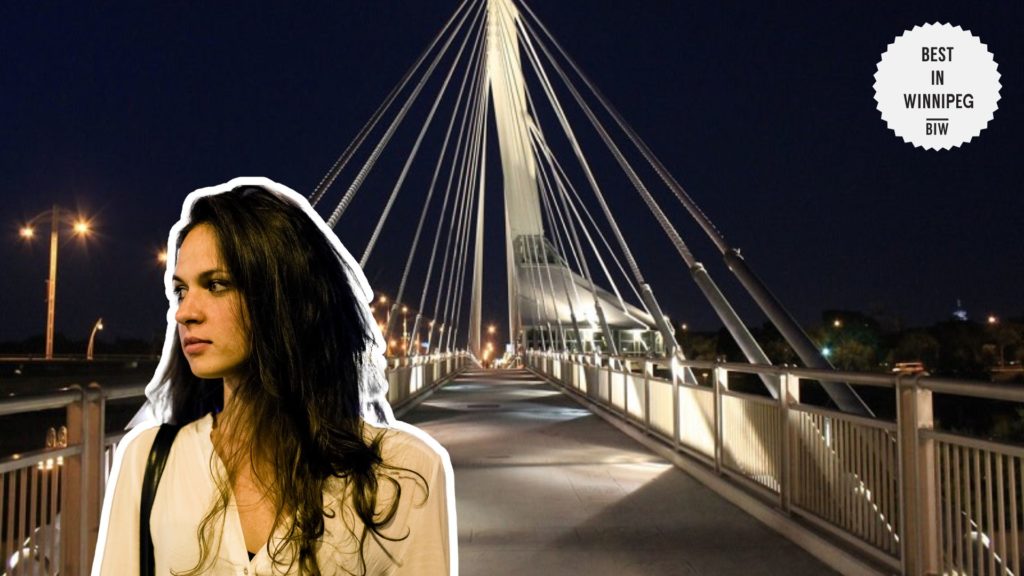
As you stroll across the bridge, Provencher Boulevard unfolds before you, serving as a vital link between the suburbs of St. James and St. Boniface, seamlessly connecting the West End to the downtown core.
Named in honor of Norbert Provencher, the first Roman Catholic Bishop of St. Boniface, Provencher Boulevard is adorned with city heritage buildings, including the elegant former St. Boniface City Hall.
The boulevard gracefully crosses the Provencher Bridge into St. Boniface, leading you along Provencher Boulevard, the bustling main street of Old St. Boniface.
As you wander further, the Taché Promenade beckons, a picturesque walkway tracing the banks of the Red River along Taché Avenue.
This transformative project has enhanced public spaces and the riverfront area, offering a widened promenade-style walkway.
As you amble along, a pedestrian belvedere, a lookout elevated above the riverbank, emerges — a perfect vantage point to soak in the scenic beauty and marvel at the integration of public art into the landscape.
Things to Do Near the Esplanade Riel Pedestrian Bridge
Beyond its breathtaking views and architectural splendor, this bridge serves as a starting point for a myriad of activities that promise to attract both locals and visitors alike.
From cultural explorations to culinary delights, the surroundings of the Esplanade Riel Pedestrian Bridge offer a diverse range of experiences.
Here are some enticing things to do in the vicinity that ensure a memorable outing for every discerning adventurer.
Explore the French Quarter.
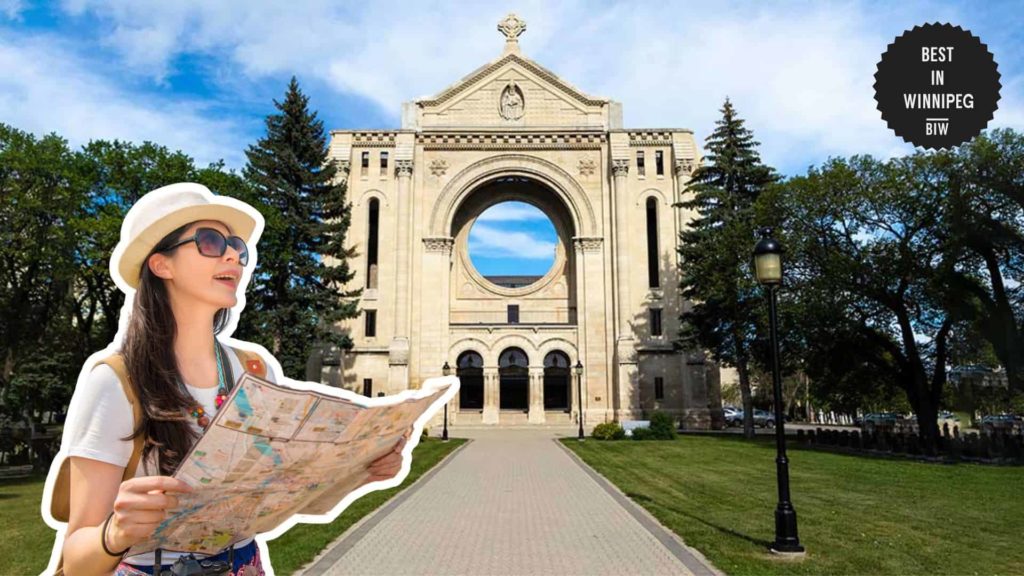
The French Quarter, also known as St. Boniface, is a neighborhood boasting the largest Francophone community west of the Great Lakes.
As you explore this culturally rich area near the Esplanade Riel Pedestrian Bridge, immerse yourself in the following highlights:
Festival du Voyageur
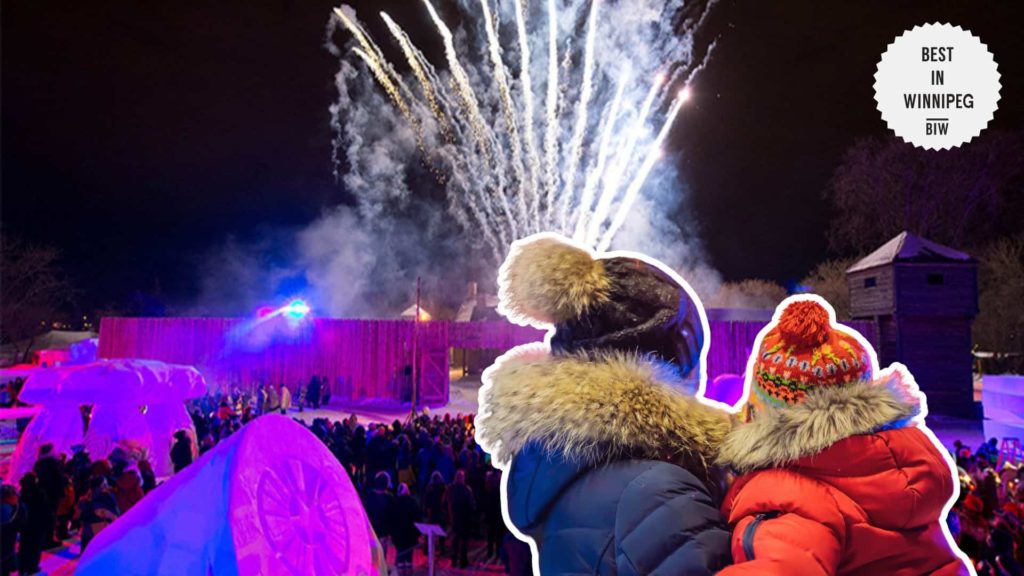
One standout event is the Festival du Voyageur, a winter celebration that takes place in February, transforming Winnipeg into a wonderland.
This is Western Canada’s largest winter festival and invites you to marvel at intricate snow sculptures crafted by artists from around the globe. You can delight in the unique experience of an outdoor “snow bar” constructed entirely from ice.
For those seeking adventure, try snowshoeing or experience the thrill of tubing down an icy slide. Additionally, don’t miss the charm of horse-drawn sleigh rides that add a touch of nostalgia to the festivities.
Fort Gibraltar
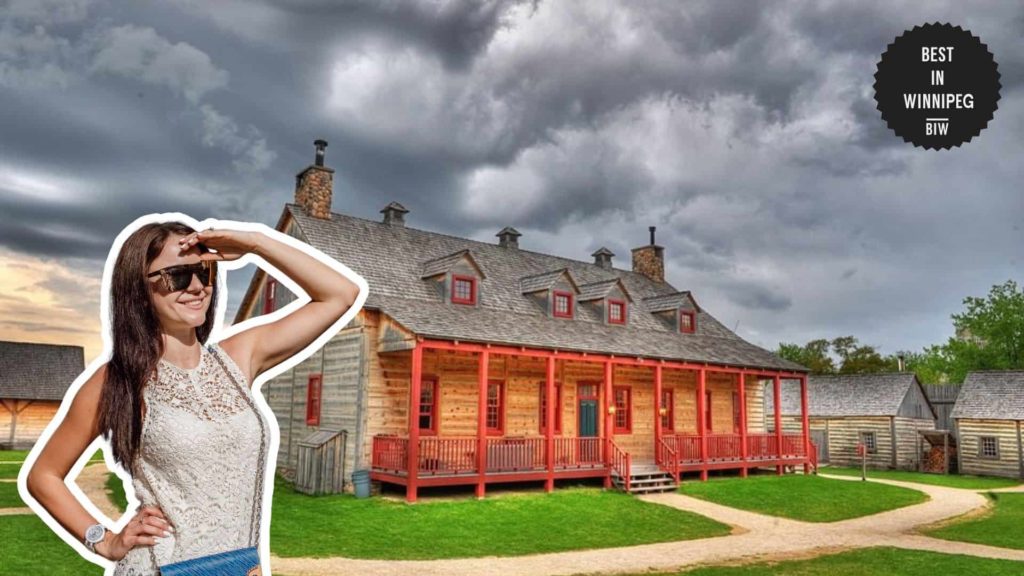
For a step back in time, explore Fort Gibraltar, originally established across the river as a fur-trade trading post in 1809 by the North West Company.
Rebuilt in its current location in 1978, the fort now serves as a picturesque venue for weddings and receptions throughout the year, blending history with contemporary celebrations.
Cultural and Commercial District
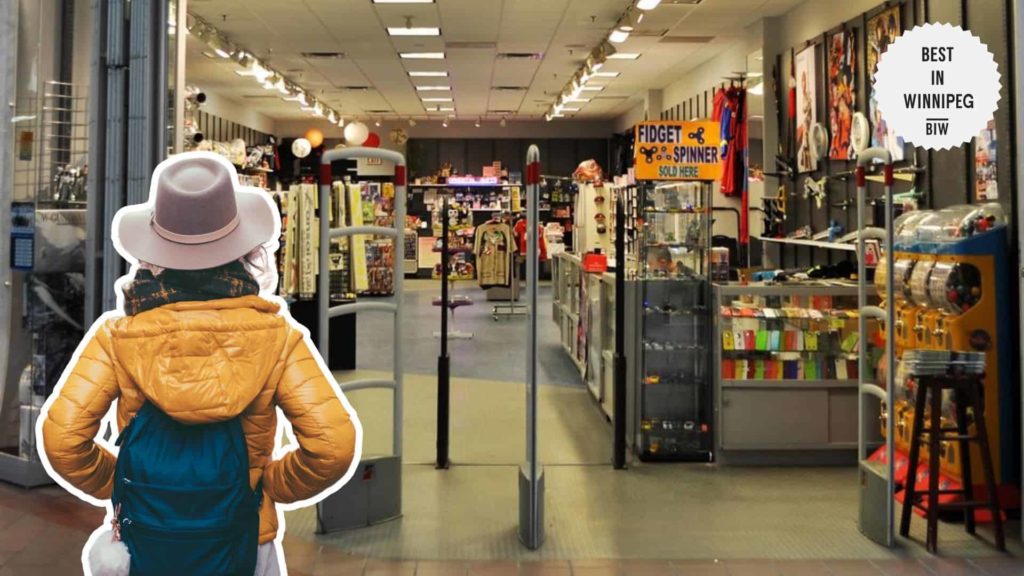
The Cultural and Commercial District, centered around Provencher Boulevard and the Provencher Bridge, beckons with an array of unique stores, restaurants, and cafes.
Here, you can indulge in the flavors of French and French-Canadian cuisine while perusing local shops offering one-of-a-kind items and delectable treats.
The area also captivates visitors with its wealth of public art, monuments, and historic buildings, creating an immersive experience that reflects the rich heritage of the French Quarter.
Wander through Saint-Boniface Museum.
The Saint-Boniface Museum, also known as Le Musée de Saint-Boniface, is a tribute to Franco-Manitoban and Métis culture and history.
Housed in the second-oldest building in Winnipeg, this historic museum occupies the former convent of the Grey Sisters, a significant structure that boasts the distinction of being the largest oak-log construction on the continent.
Built between 1846 and 1851, this place has witnessed various roles throughout its existence, serving as an orphanage, school, seniors’ home, and the initial St. Boniface Hospital.
Its walls carry the echoes of history, resonating with tales of the establishment of St. Boniface and the birth of the Métis nation.
As you explore the museum, you’ll encounter exhibits that delve into the rich tapestry of the region’s past. One focal point is the 3,000-kilometer journey undertaken by the first Grey Nuns, who arrived here by canoe from Montréal.
The museum also features a permanent exhibit dedicated to the enigmatic figure of Louis Riel. Within this showcase, you’ll discover personal items that once belonged to him, including locks of his hair, his revolver, a shaving kit, and moccasins.
Of profound significance are the artifacts associated with the somber chapter of Riel’s execution. On display are fragments of the rope used in his hanging, the white hood placed upon him before the execution, and the very coffin that cradled his lifeless form.
This poignant collection serves as proof of the historical gravity encapsulated within the museum’s walls.
Recognized for its cultural and historical importance, the convent building was rightfully designated a National Historic Site of Canada in 1958.
Visit the Saint-Boniface Cathedral.
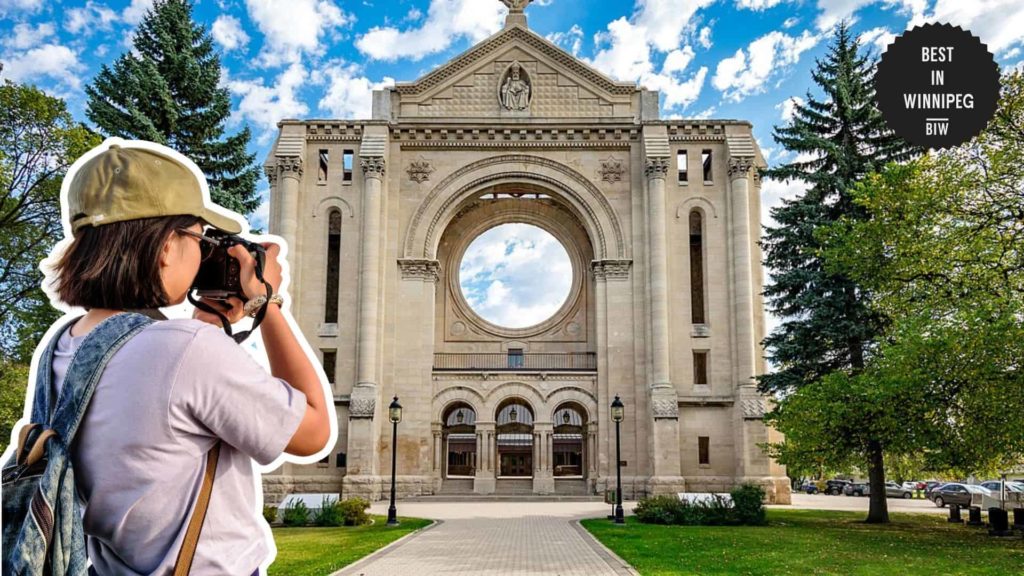
The Saint-Boniface Cathedral, also known as Cathédrale Saint-Boniface, holds the esteemed position of being the principal church in the Roman Catholic Archdiocese of Saint Boniface.
It serves the Franco-Manitoban community and the eastern part of Manitoba province.
The cathedral’s architectural splendor is a striking reflection of French Romanesque design, characterized by graceful round-arched openings and classical detailing.
Its grandeur extends beyond mere aesthetic appeal, as it once held the distinction of being the largest and most elaborate Roman Catholic cathedral in Western Canada.
Today, it remains an example of this architectural style in Manitoba.
However, the cathedral’s journey has not been without challenges. A testament to resilience, it stands as the fifth iteration on the same site since 1818.
The previous cathedral, erected in 1906, faced adversity when a fire ravaged its structure in 1968. Despite the devastation, fragments of the past endured, including the façade, sacristy, and walls.
In 1972, a new cathedral rose from these remnants, seamlessly blending the history of its predecessor with contemporary design.
Discover the Manitoba Children’s Museum.
The Manitoba Children’s Museum is a non-profit institution dedicated to enriching the lives of children. Within its walls, a world of interactive exhibits unfolds, inviting children to learn through play and exploration.
From taking on the role of train conductors or astronauts to trying their hands at TV production, children are encouraged to engage themselves in a hands-on learning experience.
The museum becomes a canvas for young minds to engage with ‘construction’ equipment, build towering structures, and go on adventures like climbing a lasagna tower.
Adding a touch of nostalgia, the museum proudly hosts the last original Eaton’s Fairytale Vignettes Display.
These timeless displays, cherished by generations of Winnipeggers, come to life during guided tours offered on Fridays, Saturdays, and Sundays.
The enchanting scenes create a magical atmosphere, captivating both young and old with the charm of traditional holiday favorites.
At the heart of the museum, a full-size train serves as a centerpiece, transporting visitors into a world where imagination knows no bounds.
The locomotive presence within the museum adds an exciting dimension to the overall experience, creating an environment that sparks the joy of exploration and discovery.
Roam around Winnipeg Square.
Winnipeg Square, located near the Esplanade Riel Pedestrian Bridge, offers a unique and bustling experience for visitors. You can venture into the underground mall, where a diverse array of shops and services await.
From delightful food and beverage outlets to specialty stores, this subterranean space caters to a variety of tastes and needs.
You may take your time exploring the labyrinth of offerings, where you’ll discover essential services seamlessly integrated into the vibrant atmosphere.
If you’re in search of a quick bite, a distinctive item, or a relaxing place to shop, Winnipeg Square provides an intriguing and convenient destination for both locals and tourists alike.
Tour the Canadian Museum for Human Rights.
The Canadian Museum for Human Rights is a beacon of unique significance and is located on Indigenous ancestral lands in the heart of Treaty One Territory and the Red River Valley.
Unveiled on March 13, 2008, this national museum is proof of Canada’s commitment to fostering a deep understanding of human rights on both a national and global scale.
Devoted exclusively to the exploration of human rights narratives, the museum offers a profound journey through diverse stories from Canada and around the world.
It is a pivotal institution, notably the first new national museum established in Canada since 1967. Its overarching goal is to enrich public awareness of human rights, foster respect for diversity, and inspire meaningful reflection and dialogue.
As visitors engage with the museum’s exhibits, events, and activities, they are invited to celebrate the principles outlined in the Universal Declaration of Human Rights.
Additionally, the museum pays homage to the rich Métis culture, intertwining its narrative with the historical fabric of the Red River Valley.
Beyond its primary focus, the museum also sheds light on the lives of those affected by ongoing conflicts through temporary exhibits. This nuanced approach allows for a comprehensive exploration of the impact of war on individuals and communities.
Enjoy Blue Cross Park.
Nestled adjacent to The Forks, near downtown Winnipeg, and just a stone’s throw away from the iconic Portage and Main intersection lies Blue Cross Park, formerly known as Shaw Park.
This baseball stadium serves as the proud home of the Winnipeg Goldeyes of the American Association.
Opening its gates on May 24, 1999, the park, originally named CanWest Global Park, stands as a testament to the city’s passion for baseball.
Replacing the erstwhile Winnipeg Stadium, it has become the premier baseball facility in the city, constructed in three phases to ensure a top-notch experience for both players and fans.
Blue Cross Park offers a seating capacity of 7,481, providing a cozy yet vibrant atmosphere for baseball enthusiasts.
Among its notable features are 30 luxury sky suites, a charming picnic area, and an open patio that offers a picturesque view of the field from the right field corner.
Adding a flavorful touch to the overall experience, an Indian cuisine restaurant is situated on the third floor, allowing patrons to savor delicious meals while enjoying the game.
Where to Stay Near the Esplanade Riel Pedestrian Bridge
If you’re planning a visit to the iconic Esplanade Riel Pedestrian Bridge, you’ll want to ensure your stay is as convenient and enjoyable as possible.
Fortunately, the area surrounding this place offers a variety of accommodation options, ranging from cozy boutique hotels to well-known chains.
Let’s explore some excellent accommodations that will place you just steps away from this renowned bridge.
Inn at the Forks
The Inn at the Forks invites travelers with its enchanting blend of comfort and convenience.
This hotel, renowned for its romantic ambiance, not only boasts a spa and wellness center but also ensures a delightful stay with air-conditioned rooms featuring a flat-screen cable TV and iPod docking station.
You can immerse yourself in the allure of the hotel, where a fitness center and an enticing restaurant await your indulgence. The proximity to outstanding restaurants and attractions effortlessly allows guests to savor the best of Winnipeg.
If you’re seeking relaxation or adventure, this establishment caters to both, ensuring a seamless blend of leisure and excitement.
Beyond the appeal of its amenities, The Inn at the Forks extends a warm invitation with its free Wi-Fi service, facilitating connectivity for guests.
Each room in this charming hotel is thoughtfully adorned with a flat-screen TV and air conditioning, promising a cocoon of comfort after a day exploring the surroundings.
The Fort Garry Hotel, Spa and Conference Center, Ascend Hotel
The Fort Garry Hotel, Spa, and Conference Center was originally erected in 1913 as a Grand Trunk Pacific Railway hotel.
With its rich past, this hotel not only provides accommodation but also invites guests to experience a touch of history.
You can indulge yourself in luxury with the hotel’s full-service spa and well-equipped gym, ensuring a relaxing stay. The rooms are designed for comfort, featuring amenities such as bathrobes, 46″ flat-screen TVs, and air conditioning.
The bathrooms are stocked with high-quality L’Occitane bath products, enhancing the overall indulgence of your stay.
Conveniently located within a 10-minute walk, guests can explore popular attractions such as the Manitoba Children’s Museum, Forks Market, and the Canadian Museum for Human Rights.
This prime location allows you to easily access the vibrant cultural scene and entertainment offerings of the area.
To satisfy your culinary cravings, the Oval Room Brasserie awaits, offering a delectable lunch and dinner menu. As an added treat, enjoy daily jazz entertainment, adding a local flair to your dining experience.
Mere Hotel
The Mere Hotel is a modern and trendy boutique accommodation option. This chic hotel effortlessly combines style with comfort, ensuring a delightful stay for its guests.
Complimentary WiFi ensures you stay connected, while a flat-screen cable TV and a refrigerator add a touch of convenience to your experience. Some rooms even boast enchanting river views, providing a picturesque backdrop to your stay.
For those inclined towards fitness, a well-equipped fitness center is at your disposal, offering a refreshing way to start or end your day. If you’re an avid fitness enthusiast or just looking to stay active during your travels, this facility caters to all.
Beyond the hotel’s doors lie a plethora of attractions, beckoning you to explore the surroundings. You can immerse yourself in the history of Manitoba with a visit to the nearby Manitoba Museum or Fort Gibraltar.
If you’re in the mood for some cultural indulgence, the Manitoba Theatre Center is also within easy reach.
The Fairmont Winnipeg
The Fairmont Winnipeg is a distinguished hotel that boasts 340 well-appointed accommodations, each thoughtfully designed to provide the utmost comfort and sophistication.
You can engage yourself in entertainment with 42-inch flat-screen televisions offering premium cable channels and pay-per-view films.
The Fairmont Winnipeg’s commitment to luxury extends to its bathrooms, where you can unwind in baths or showers equipped with a refreshing rainfall shower head.
You may also want to pamper yourself with plush bathrobes, designer toiletries, and the convenience of a hairdryer at your fingertips.
Ideally situated, the hotel is a stone’s throw away from the Old Market Square and the Travel Manitoba Visitor Information Center.
Within a leisurely stroll, guests can explore historic places such as The Forks National Historic Site, the Manitoba Museum, and Shaw Park.

